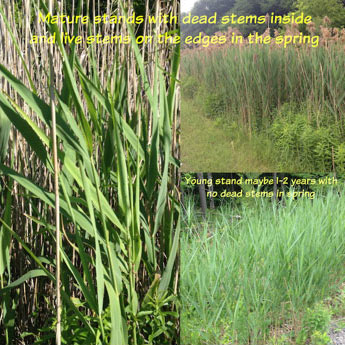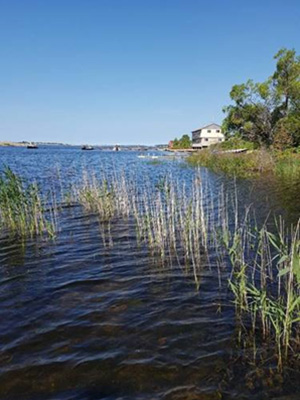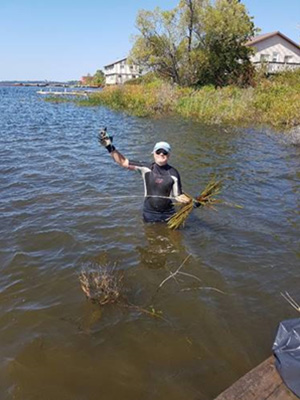By Jennifer Spiess, Director

A few years back, KRAA past president John Bell and I attended a phragmites training session on behalf of KRAA. The session, put on by Georgian Bay Forever, explained:
Work was done over the ensuing years to survey the shorelines of the Key River from the harbour to Ludgate. There is much of the native, non-invasive phragmites along the river, especially visible at the grassy narrows. And this is fine. It is supposed to be here and is an integral part of the natural ecosystem.
However, we did find one patch of invasive phragmites in the harbour. It is a very small and recent patch so we had good confidence we could “nip it in the bud”. We created a plan to eradicate this patch of invasive phragmites with advice from the Georgian Bay Forever training seminar and from Professor Lynn Short, an expert in removal of invasive phragmites.
This year, John and I and KRAA member Rich Gane, put that plan into action. We did 2 rounds of “Phragbusting” over the summer— one in early July, one in late August. You may have seen us out there, standing in waist deep water, wearing wetsuits and cutting plants and wondered, “What the heck are they doing?”
To remove the weed successfully, one needs to cut the stem just above the root, without disturbing the root. Root breakage causes the plant to send out runners in all directions, defeating the efforts to remove it. Phragmites is the virtual Hydra of the plant world. Done repeatedly over 3-5 years, the cutting back of the green parts of the plant starves the root system which eventually dies and rots. Even this year, we noticed a significant reduction in the size of the patch by year end. We will continue to monitor and repeat the removal process over the next few years until we no longer have any phragmites growing in the harbour. Next year, you’ll see us out there again standing in the muck, cutting water reeds. And now you know why so give us a wave!


To learn more about phragmites, go to the Georgian Bay Forever website at: https://georgianbayforever.org/invasive-phragmites/